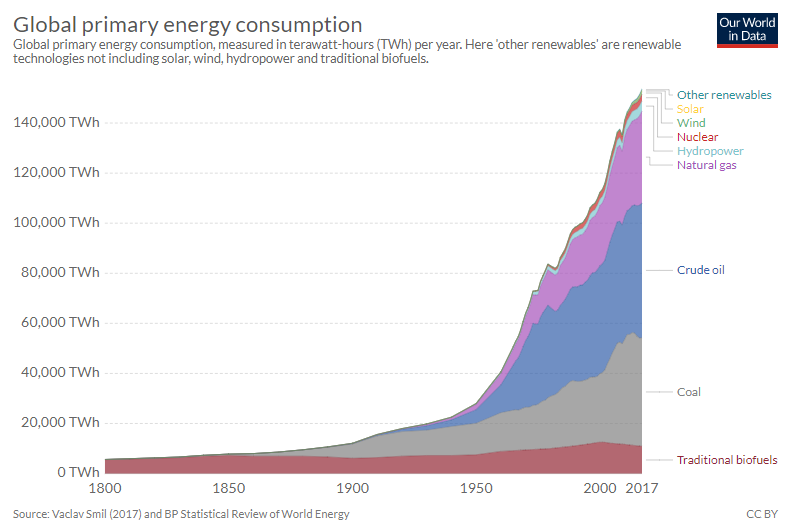Written by Ryan McGuine //
There have been numerous energy transitions in the past, all of which have been driven by economic imperatives or resource scarcity, and have moved in the direction of increasing power density. The current energy transition toward energy sources that emit less greenhouse gases is a departure from previous transitions in both respects: it is driven by environmental imperatives, and moves in the direction of decreasing power density.
Historically, energy transitions have moved very slowly — coal took 35 years to provide 25% of the global primary energy demand, oil took 40 years to do the same, and natural gas took 55 years. One reason for the protracted timeframe is that efficiently producing, distributing, and converting any energy source requires big infrastructure investments, and most infrastructure does not multitask. Similarly, activities like heavy industry, aviation, and building heating are deeply integrated with the economy, but lack viable alternatives. Together, these factors lend tremendous inertia to the existing energy system that is hard to counteract.
While there have been changes in the share of energy consumption supplied by different sources, as seen below, humans have never actually used less of any energy source. Higher energy consumption is associated with higher incomes, and as the world has become wealthier, the total amount of energy (and thus, the total amount of fossil fuels) consumed has only ever increased. Indeed, all previous “energy transitions” were more accurately energy additions. That is, the up-and-coming energy source has grown faster than existing sources, but all sources have continued to grow.

The last decade has seen impressive cost reductions for low-carbon energy sources — costs have fallen 80% for solar panels, 30-40% for wind turbines, and 50% for electric vehicle batteries. Declining costs have driven double-digit annual growth in renewable energy installations and electric vehicle sales. However, such rosy statistics can be misleading. Despite large deployment growth, that growth is off a small base, and renewables make up just 9% of global power generation and 4% of global primary energy. To date, deployment of renewables has been in line with previous energy transitions, in that they have met incremental demand growth, but have not displaced existing demand for fossil fuels.
The harsh reality of climate change is that total greenhouse gas emissions is what matters, not any energy source’s share of total consumption. Thus, effective climate mitigation demands not only meeting incremental growth with low-carbon energy sources, but also displacing existing energy consumption with low-carbon sources. Doing so is achievable, but it is also unprecedented, and requires much more than the status quo.
